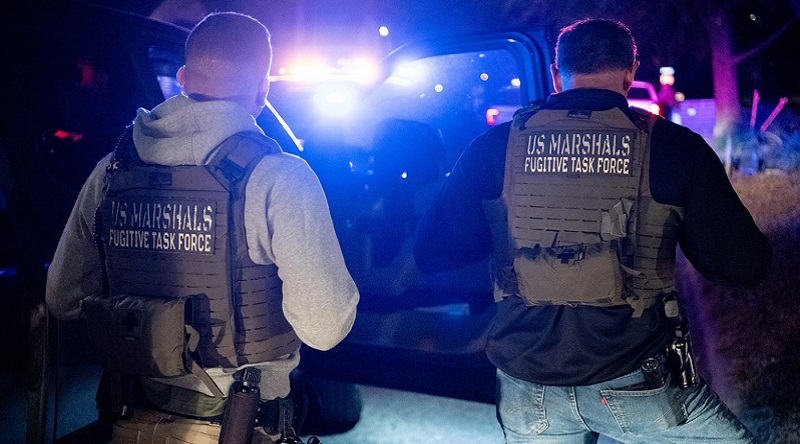
The lore of federal law enforcement agencies traditionally snubbing local cops may have once been a thing but, nowadays, city cops and county deputies work alongside federal agents in various ways, pool resources and intel, and cull criminals from our streets.
Like any other profession, real or perceived friction comes to the fore. Smoothing rough edges is the logical remediation for the enterprise to thrive. So, too, is the case in policing.
Although I didn’t quite hear of it much before my days as a policeman, the reality of law enforcement officers of any stripe and all levels of jurisdictional dominion melding together and working as interagency professionals is a relative staple in the biz of nabbing bad actors.
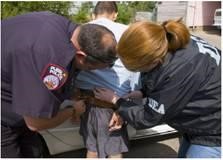
(Photo courtesy of the U.S. Drug Enforcement Administration.)
Since law enforcement training is largely universal, no matter the governmental level (federal, state, county, municipal), why not pool resources and ally with each other to down devilish behaviors and preempt victimization? Police task forces are a workable antidote to any locale’s woes.
A task force is defined as “…a unit or formation established to work on a single defined task or activity. It is a temporary grouping under one leader for the purpose of accomplishing a definite objective. In government or business, a task force is a temporary organization created to solve a particular problem.”
I’m sure we can all agree that narcotics in our society is a particular problem, so let’s focus on that aspect, engendering a police task force…
A typical task force assemblage involves U.S. Drug Enforcement Administration (DEA) agents and local cops working in tandem to bring down criminal enterprises peddling dope. Following is a synopsis colorizing today’s topic:
“In 2016, the DEA State and Local Task Force Program managed 271 state and local task forces, which included Program Funded, Provisional, HIDTA, and Tactical Diversion Squads.
“The difference between funded and provisional state and local task forces is that the financial support for funded task forces is provided by DEA headquarters and includes additional resources for state and local overtime.
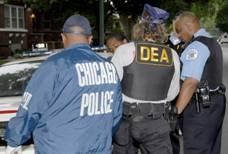
(Photo courtesy of the Drug Enforcement Administration.)
“Provisional task forces are supported by the operating budgets of DEA field division offices, without resources from DEA headquarters, and do not include state and local overtime. These task forces are staffed by over 2,200 DEA special agents and over 2,500 state and local officers. Participating state and local task force officers are deputized to perform the same functions as DEA special agents.”
Generally, a task force is comprised of sworn LEOs and civilian support personnel (public safety dispatchers, crime-scene technicians, administrative assistants, crime-lab scientists, etc.), exemplifying a bounty of shared experience and pooled police prowess to effectively sleuth criminality and jail evildoers.
My initial exposure to police task force concepts occurred when I was a rookie cop. One of our Street Crimes Unit cops, with a ton of law enforcement experience, was approved to join a federal task force, namely the U.S. Marshals Service. The combined effort was to round up as many fugitives in our city and other jurisdictions. Local cops’ authority outside of their jurisdiction? The answer is being “deputized” as a special federal agent operating among a task force.
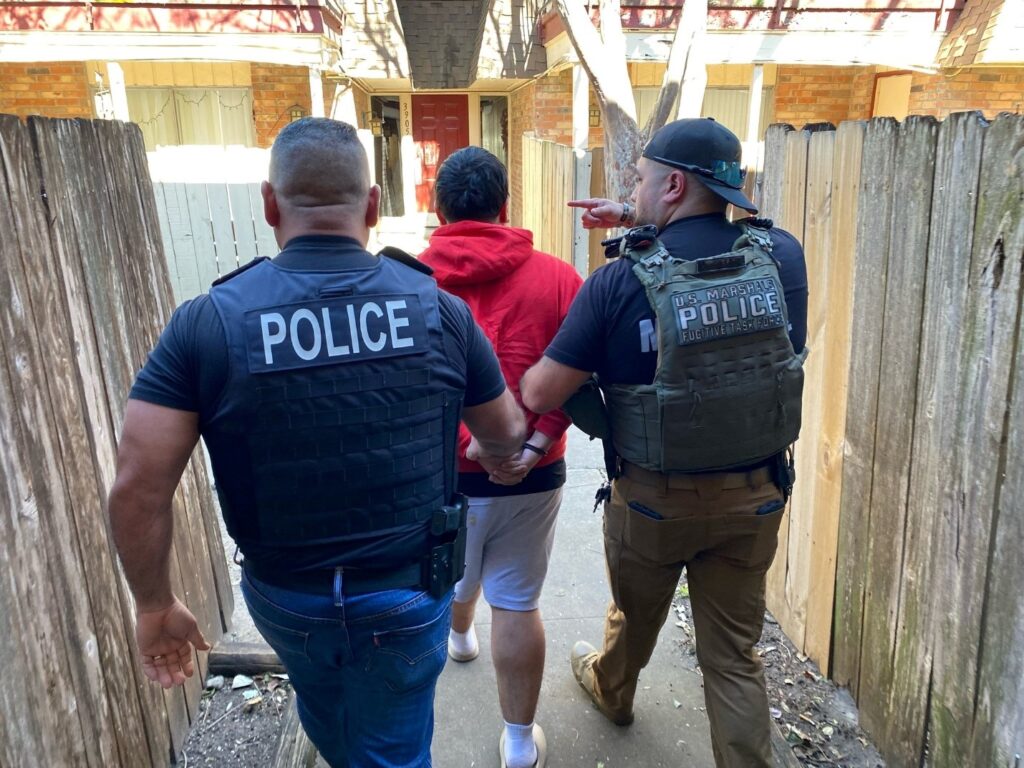
(Photo courtesy of the U.S. Marshals Service.)
Per the DEA’s stance on task force concepts, “state and local officers could be deputized as federal drug agents, thus extending their jurisdiction.”
Some of our police officers working with federal law enforcement partners are officially deputized, issued federal-agent badges (DEA, ATF, US Marshals), and work out a schedule with the federal agents to work some of their investigations (elsewhere) and ours (locally). “Participating state and local task force officers are deputized to perform the same functions as DEA special agents,” per the DEA.
Executives in police administration either give the affirmative nod or disapprove their cops from engaging in task force outings (based on typically modest staffing of America’s majority of size-sensitive law enforcement agencies). Generally, our administration more often affirmed working with federal agents. One of our cops was pretty nifty in undercover work; he went on to be deputized by three different federal law enforcement agencies, requiring an extra-large shadowbox upon retiring.
The co-reliance was recognized by the federal law enforcement community. Naturally, local cops know the players in their jurisdiction better than agents operating in a much larger context:
“As drug trafficking increased nationwide, DEA recognized the need for cooperation and coordination of drug enforcement efforts with their state and local counterparts. This cooperation provided several advantages to all participating agencies: DEA was able to draw on the expertise of state of local law enforcement; DEA could share resources with state and local officers, thereby increasing the investigative possibilities available to all; […] state and local participating agencies could receive an equitable share of forfeited drug proceeds; and DEA could pay overtime and investigative expenses for the state and local agencies.”
As delineated in the mission statement and its explanation in the DEA material posted herein, a symbiosis exists…
Local law enforcement benefits from the extra staffing of federal agents, their myriad resources, and the robust budgets they have at their disposal, dwarfing what most of America’s police departments and sheriff’s offices salivate over. Conversely, pedigrees of local criminals are usually already established by city cops and/or county deputies, bringing the intel to the task force table.
Similarly, task force assemblies of interagency personnel train together in both federal and local settings. Our department’s task force members engaged in firearms qualifications and defensive tactics and all-things-police skillsets at federal law enforcement facilities, and they reciprocated by training at our county-level public safety training center.
I remember one of our task force cops sharing how based on the size of the criminal organization investigated and arrested for operating in our city, the feds would sometimes “take the case” and prosecute it federally, with that determination being discussed by all involved LEOs, as equals, working harmoniously in a chronically violent society. No squabbling. Just various LEOs representing different agencies focused on erasing criminal enterprises, no matter whose primary jurisdiction it is.
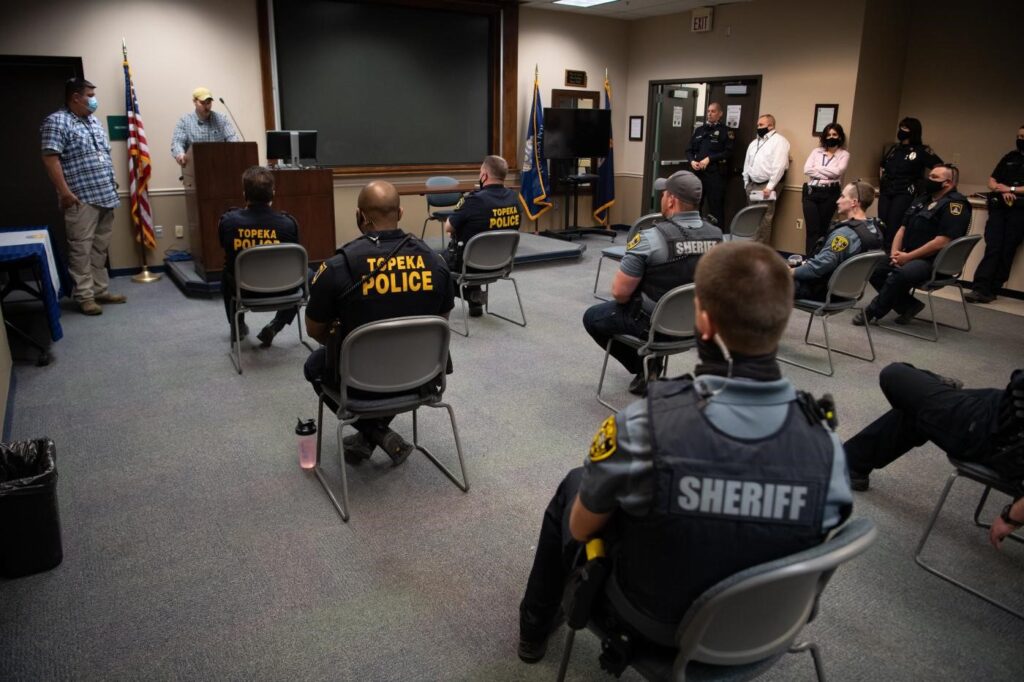
(Photo courtesy of the U.S. Marshals Service.)
Thus, the days of so-called federal bullying of modest dominion cops matured to same-page, same-objective, same-team victories…serving citizens and merchants as avowed upon swearing in after academy graduation.
Indeed, the members of task forces meet up again if/when their police operations netting miscreants goes to trial. It is logical to assume anyone sitting in the seats of a courtroom containing cops from different levels and agencies testifying for the same criminal cases, might raise an eyebrow. As mentioned at the onset of this material: the days of yonder whereby “the feds” didn’t want to play nice with local LEOs is a bygone blemish smoother over since.
This is another example of why the National Police Association brings to our readers the substance behind the badges, to be abreast of the ways and means invested in public safety and the citizenry’s sanctity. No matter where cops are from, the tin badges are relatively homogenous, the training is largely synonymous, and the cohesive task forces representing justice principles spanning American soil.